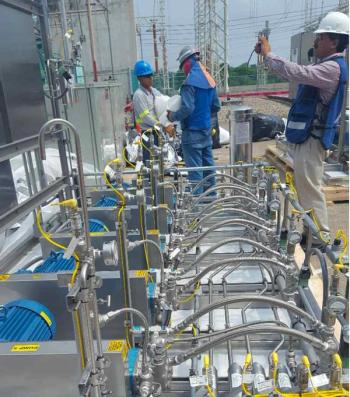
MYTH: THERE IS PLENTY OF INSTRUMENTATION ON RECIPROCATING COMPRESSORS
Sometimes, if you don’t want to know the answer to a question, you shouldn’t ask it. That seems to be the approach that many reciprocating compressor original equipment manufacturers (OEMs) and packagers have about their equipment diagnostic and alarm/shutdown instrumentation. About two years ago, we wrote a myth about excessive instrumentation on gas turbine driven compressor packages (Turbomachinery International, Jan/Feb 2014) and how this often leads to unnecessary shutdowns and impacts availability. Now it is time to dissect the other extreme: Reciprocating compressor package instrumentation.
Whereas on gas turbines and centrifugal compressors, there is sometimes an overabundance of installed instrumentation, albeit not always sufficient to perform long-term diagnostics, our machinery brethren that operate engines and reciprocating compressors suffer under an acute lack of machinery instrumentation. So what is the optimum number of instruments on a reciprocating compressor?
Besides the issues mentioned below, instruments cost money. Redundant instruments cost even more money, but allow continuous operation even when some instruments are not operating. On a typical gas turbine compressor package there are between 200 and 250 individual instruments, including multiple and often redundant pressure, temperature, flow, vibration, and level measurements of all the utility streams, gas path, and process gas conditions.
On the other hand, on an engine-driven reciprocating compressor package, there are usually only between 20 and 30 instruments. Many will argue that reciprocating machines are more robust and therefore need less instrumentation. However, maintenance requirements, availability records, and emissions levels do not support that notion. Why do we use instrumentation on machinery? Primarily, instrumentation is used to protect the equipment, to control the process, or to operate it as efficiently as possible. Efficiency, in this context, does not only mean minimizing fuel consumption, but also extending maintenance intervals, reducing maintenance cost, and reducing harmful emissions. Reciprocating compressor-engine packages will typically have one suction and discharge pressure and temperature measurement set, lube oil pressures and temperatures, and sometimes vibration measurements from accelerometers near the bearings.
Thus, although an engine driven reciprocating compressor exhibits significantly higher vibrations and associated mechanical stresses than gas turbine-driven centrifugal compressors, there are very few vibration sensors installed to monitor or trend this. Similarly, few reciprocating compressors have instrumentation that can be used to accurately measure performance from either the PV card or enthalpy rise. Even simple operational parameters such as process gas flow rate and utility stream conditions are often not measured.
Admittedly, flow measurements in a pulsating gas stream are not trivial. That severely limits the ability to fault diagnose a machine or to trend dynamic and thermodynamic behavior of the machine. With the instrumentation found on most machines, one cannot even properly measure output power or efficiency. To compensate, some operators perform regular field testing of the compressor’s PV card (for power and efficiency) and vibration using stick-on accelerometers.
Unfortunately, field measurements cannot provide the whole picture of the machine’s health and performance since they are taken only over limited finite periods and do not allow for accurate and consistent data trend analysis. Years ago, efforts were made to measure rod loads as a way to determine operational limits of the compressor. We are, at this point, not aware of any widespread use of this technology or of any improvement efforts. Also, one of the most severe emissions from reciprocating compressors is process gas leakage across the shaft packing seals. But there is no measurement to indicate the condition of the seal packings and there is certainly no direct measurement of the amount of leaked flow.
To properly assess the condition of the seals, one usually has to perform a visual inspection which requires a lengthy shutdown of the machine. For obvious operational and commercial reasons, many operators neglect these inspections and seal leakage on many reciprocating compressors is excessive. In North America alone, there are tens of thousands of reciprocating compressors in operation.
There is little public domain statistical data available on their outage records and performance, but most operators indicate that there is a significant potential for improvement of reciprocating compressors reliability, availability, and efficiency. Additional package instrumentation for vibration measurements, utility stream conditions, and output power and efficiency will go a long way to help diagnose and improve reciprocating machinery performance. Sometimes it is good to ask the questions and get the answers if you want to improve your product. Optimization of asset operations through analytics and continuous live and automated diagnostics requires that sufficient instruments be on the machine.
Newsletter
Power your knowledge with the latest in turbine technology, engineering advances, and energy solutions—subscribe to Turbomachinery International today.





